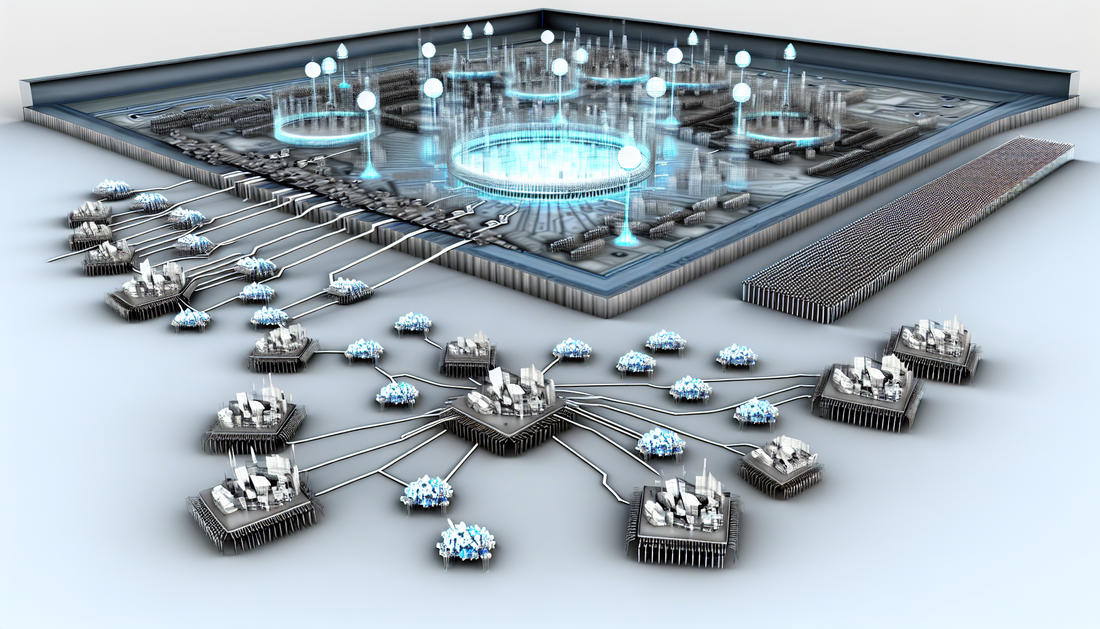
Unlocking RNDR: The Future of Decentralized Rendering
Share
Exploring the Use Cases of RNDR (Render Network)
The RNDR token is the native cryptocurrency powering the Render Network, a blockchain-based distributed GPU rendering solution. Designed to tackle the increasing demand for decentralized and scalable rendering infrastructure, RNDR has several compelling use cases that extend its utility within various industries. Below are some of the key use cases associated with this crypto asset.
1. Decentralized Rendering Services for Content Creators
The primary use case for RNDR is supporting rendering services for creators in industries such as animation, filmmaking, gaming, and virtual reality. By leveraging the GPU computing power of idle devices in the network, artists and developers can render complex 3D images and scenes more efficiently. This decentralization reduces reliance on traditional rendering farms, offering lower costs and greater accessibility for independent content creators.
2. Animation and Visual Effects
High-quality animation and visual effects often require significant computing resources to render photo-realistic graphics. Render Network facilitates distributed GPU rendering, enabling studios and individual creators to scale their workloads efficiently. The token is used to compensate GPU providers in the network, creating a marketplace for computing power tailored to the demands of large-scale animation projects.
3. Virtual Reality (VR) and Augmented Reality (AR) Applications
Virtual reality and augmented reality applications rely heavily on detailed rendering to create immersive digital worlds. RNDR supports the GPU-heavy processes necessary for producing real-time, high-fidelity virtual and augmented reality experiences. By decentralizing the rendering process, it helps developers overcome traditional limitations associated with cost and infrastructure requirements.
4. Architectural Visualization
Architects and designers often use 3D modeling and rendering to visualize their projects before construction. Render Network enables faster and more cost-effective rendering for architectural tools, allowing teams to produce lifelike models and visual presentations more efficiently. RNDR provides the underlying medium for transactions between rendering service clients and GPU providers.
5. Gaming Industry Support
The gaming industry necessitates the rendering of complex assets such as environments, character designs, and lighting effects. Render Network provides a cost-effective alternative for game developers needing ample rendering power during production. Its decentralized model helps studios optimize budget allocation while accessing scalable computing resources.
6. Scientific Simulations and Data Visualization
Beyond entertainment, the Render Network can also be applied to scientific simulations and data visualization. Fields like physics, meteorology, and medicine often rely on GPU-intensive computations to generate models and visual representations. RNDR enables these institutions to rent rendering capacity in a decentralized manner, improving efficiency in simulations and research workflows.
7. Graphic Design and Advertising
Advertising agencies and graphic designers can use Render Network’s infrastructure to create high-quality visual content without investing in dedicated hardware. From commercial campaigns to product imagery, RNDR facilitates rendering tasks while serving as a payment mechanism between service buyers and GPU providers on the platform.
8. The Metaverse
With growing interest in the metaverse, RNDR has a place in rendering the 3D assets required for shared digital environments. These assets may encompass avatars, landscapes, and interactive objects. By providing decentralized GPU power, Render Network simplifies the creation of these immersive worlds while lowering operating costs for metaverse developers.
